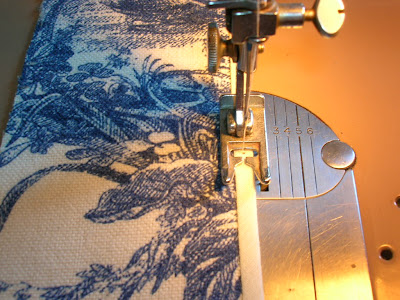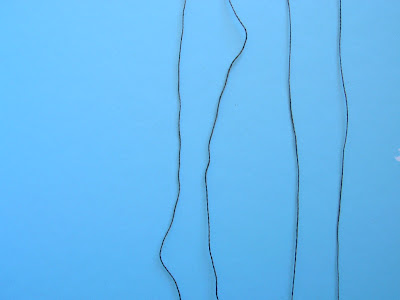It's on! And thanks for all the encouraging words and suggestions while I was working on this.

I don't think a summer corset would ever be worn over black, but I wanted the see-throughness to show. This corset does create a long silhouette. I ended up with a very straight front, it doesn't scoop in at the waist and cup over the belly like I had expected. Maybe it would have had I used a 13" busk instead of a 12"? Or maybe that will happen if I lace all the way closed? I am impressed with the cane. This corset is very lightweight but gets the job done.

I took 3/4 inch off the bottom center front of the original pattern and blended it into the side at the hip resulting in a softer curve along the bottom front. I could have taken that 3/4 inch off all the way around and kept the nicer curve. The drop at the center front on top could have been a tad less, and the straight edge I patterned appears scooped when worn. I am so glad I raised the bust and added an extra 3/4 inch at the top edge. If I hadn't I'd be overflowing, and that's not pretty. But that wrinkling above the cording bugs me. I like the more angled look of the cording, and it does add support. I imagine if I had made it more horizontal as originally patterned I would have a slightly wider bustline.

As it's laced here the corseted waist measures the same as my natural waist, no reduction, just reshaping. I love the back top edge, and think the flossing looks nice. There are a few bones that go right to the binding and I could floss right through the cane. Neat. All thread used for the flossing on the bone casings was waxed and ironed. Ironing made it even smoother than before and it looked like high-end dental floss. Learn a lesson from me though, do not experiment with leftover thread to see if it works like dental floss. It does, until you hit molars, then it breaks and you will have to find a pair of tweezers to pull the thread from between those back teeth.
All in all I'm pretty happy with the way this corset turned out. I like the colors and the contrasting thread and I'm pleased with the quality of construction. If I sew this pattern again the big change I'd make would be to take another inch off the waist. Lots of things learned, lots of things to apply to future corsets.
Next up: 1780 stays










































